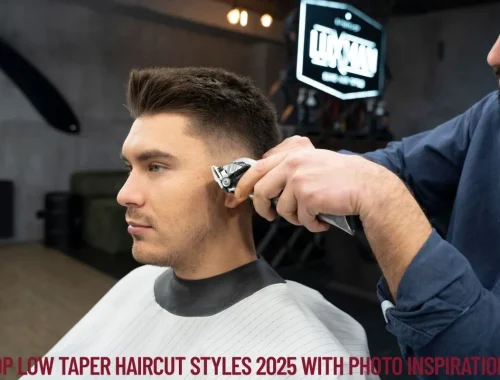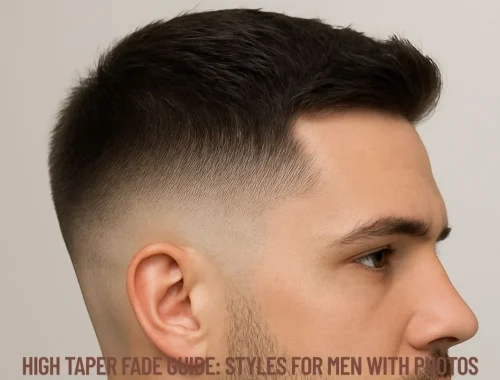
What Is Wavy Hair? Understanding Hair Type 2A, 2B, and 2C
Wavy hair is one of the most versatile and popular hair textures, sitting comfortably between straight and curly hair. It offers natural volume, beautiful texture, and a unique pattern that many people desire. But understanding what is wavy hair? and the differences between its subtypes—Type 2A, 2B, and 2C—is key to properly caring for and styling your waves.
In this article, we’ll explore the wavy hair characteristics, the hair typing system, and tips for managing each subtype so you can embrace your natural texture with confidence.
Table of Contents
ToggleWhat Is Wavy Hair? A Quick Overview
Wavy hair features strands that form a gentle “S-shaped” or loose “S-shaped curls” pattern, typically falling somewhere between straight hair and tight curls. It usually has more medium-textured waves compared to straight hair but lacks the tight coils of curly hair. These waves often create natural volume and movement.
Unlike straight hair, wavy hair tends to have more texture and can be prone to frizz, especially in humid conditions. The wave pattern is sometimes uneven, creating a natural, tousled look that is highly sought after.
The Hair Typing System: Understanding 2A, 2B, and 2C
The most common classification for wavy hair comes from the hair typing system, which categorizes hair into types 1 through 4, with subtypes A, B, and C indicating the degree of curl or wave.
Type 2A Hair
Type 2A hair is the loosest form of wavy hair. It features very subtle, loose wave patterns that are fine and thin. These waves tend to be soft, flat, and usually close to the scalp. Type 2A hair often has root volume techniques, as it can lie flat on the head without much natural lift.
Characteristics of Type 2A:
-
Gentle, barely-there waves
-
Fine to medium texture
-
Low to moderate frizz
-
Can easily be styled straight or waved
Type 2B Hair
Type 2B hair displays a more visible, defined S-curl wave pattern, typically forming more consistent waves throughout the length. The texture is usually medium and has a bit more body and volume than 2A. This subtype can be prone to moderate frizz, especially if not properly moisturized.
Characteristics of Type 2B:
-
Clear S-shaped waves
-
Medium texture with natural volume
-
Prone to frizz and dryness without proper care
-
Responds well to wave definition products
Type 2C Hair
Type 2C hair is the thickest and most textured of the wavy hair types. The waves are deeply defined and may start as loose curls or tight S-shaped waves near the roots. This subtype has coarse, wavy hair with high volume and can be more resistant to styling.
Characteristics of Type 2C:
-
Tight, prominent waves or loose curls
-
Thick and coarse texture
-
Higher frizz levels, especially in humid conditions
-
Requires intense moisture and strong frizz control for wavy hair
Common Challenges for Wavy Hair Types
Each wavy hair subtype shares some common challenges but also has unique care needs. Let’s look at the most frequent issues:
-
Frizz and Flyaways: Wavy hair tends to be more porous than straight hair, making it more susceptible to frizz, especially in humid climates.
-
Dryness: Without proper hydration, waves can lose their bounce and become brittle or crunchy.
-
Wave Pattern Disruption: Using the wrong products or heat tools can flatten or distort the natural wave pattern.
-
Scalp Care: Keeping the scalp healthy and hydrated is essential for maintaining healthy waves.
Caring for Your Wavy Hair: Tips for Each Type
Hydration Is Key
No matter your subtype, a solid wavy hair care routine focuses on moisture retention. Using moisturizing products for wavy hair—such as conditioners with curl-enhancing ingredients like aloe vera, glycerin, and coconut oil—helps lock in hydration and smooth the hair cuticle.
Use Wave Definition Products
Products designed to enhance wave definition can make a huge difference. These often contain lightweight oils or butters that provide hold without weighing hair down. For Type 2B and 2C, these products help tame frizz and create those signature defined S-curls.
Avoid Heat Damage
Heat styling can weaken the hair’s natural texture. If you use heat tools, always apply heat protection for wavy hair to prevent damage. Air drying or using a diffuser on a low setting is preferable for maintaining natural wave enhancement.
Gentle Cleansing
Harsh shampoos with sulfates can strip natural oils, leading to dryness and frizz. Opt for sulfate-free, hydrating shampoos that support scalp health and avoid disrupting your wave pattern.
Styling Techniques for Wavy Hair
Styling wavy hair involves accentuating your natural texture while minimizing frizz and dryness.
-
Use a wide-tooth comb or fingers to detangle while wet, which preserves the wave pattern definition.
-
Apply leave-in conditioners or lightweight creams while hair is damp.
-
Scrunch hair gently to encourage waves to form.
-
Consider humidity-resistant styling products if you live in a moist climate.
-
Avoid brushing dry waves to prevent breakage and frizz.
Understanding Your Hair’s Porosity and Texture
Knowing your hair’s porosity helps tailor your care routine. Wavy hair can range from low to high porosity:
-
Low porosity hair repels moisture but retains oils well.
-
High porosity hair absorbs moisture quickly but also loses it rapidly, leading to dryness.
For high porosity wavy hair, rich moisturizers and protein treatments can help strengthen strands and maintain shape.
Scalp Care for Healthy Waves
A healthy scalp is the foundation of healthy hair. Using gentle, hydrating shampoos and scalp treatments can improve scalp hydration for waves, reducing irritation and flakiness.
The Role of Genetics in Wavy Hair
Wavy hair patterns are influenced by genetics and biological factors. The shape of your hair follicle affects whether your hair is straight, wavy, or curly. Understanding this helps explain why some people have loose waves (2A) and others tighter waves (2C).
Final Thoughts: Embrace Your Waves
Whether you have Type 2A, 2B, or 2C wavy hair, understanding your hair type is the first step to unlocking the full potential of your waves. Tailoring your hair care routine with the right products and techniques will help you control frizz, enhance your natural wave pattern, and keep your hair looking healthy and vibrant.
Remember, wavy hair is uniquely beautiful — and with the right care, your natural waves can become your signature look.
You May Also Like

Top Low Taper Haircut Styles 2025 with Photo Inspirations
August 19, 2025
High Taper Fade Guide: Styles for Men with Photos
September 4, 2025

